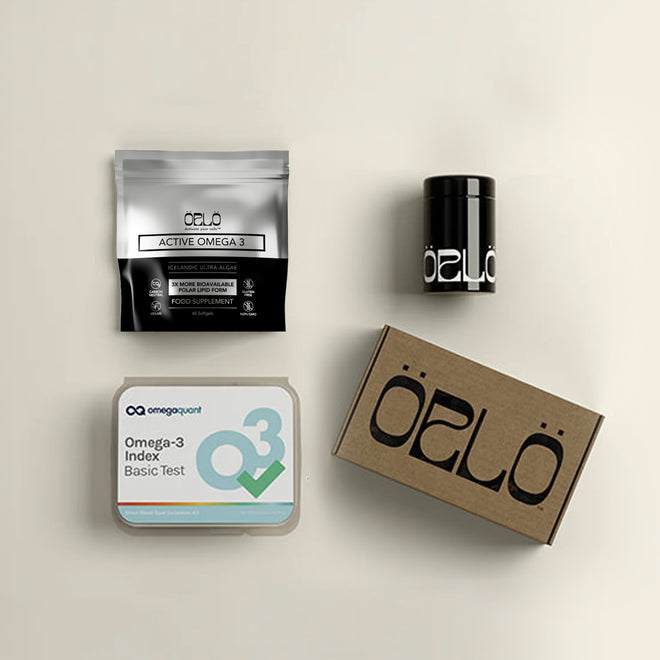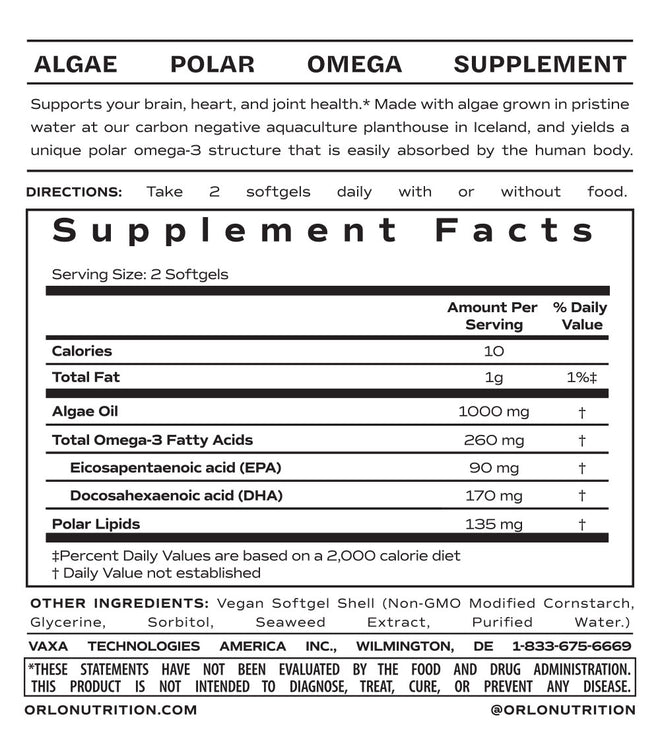Free shipping on purchases over $69
Why You Can’t Rely On Fish For Your Omega-3s and Protein Anymore
For decades, concerns about the long term sustainability of commercial fishing practices have plagued the news. Oceans, lakes and rivers are polluted with toxic chemicals, heavy metals, pharmaceuticals, microplastics, and even nuclear waste. While this has made fish consumption increasingly problematic, there are thankfully new solutions that can nourish humanity without worry. In this article we will explore the future of nutrition, with bio-active nutrition sources from some of the oldest lifeforms on the planet - microalgae! The conversation focuses on four critical elements:
- The current state of overfishing
- Replacing the nutrition that fish provides
- Harnessing the power of the original life source
- Why selecting bio-active nutrition sources is so much better
Current state of overfishing
Overfishing is a serious environmental issue that poses a threat to the delicate balance of marine ecosystems. This occurs when fish populations in a particular area are harvested at a rate that exceeds their ability to reproduce and maintain their numbers. Using extractive practices of fishing can have disastrous effects on fish populations and their habitats, as well as on the livelihoods of people who depend on fishing for food and income. Fish makes up 17% of all the animal protein we consume, making fish a critical component of our food supply chain. and 90% of the world’s marine fish stocks are now fully exploited with 29% truly overfished (WeForum.org n.d.).

Image: Food and Agriculture Organization (FAO) of the United Nations.
When fish populations are fully exploited, their populations cannot weather potential issues, like warming oceans, intense algae blooms, or increasing ocean acidity, all of which impact them today. We even saw a 5,000 mile blob of seaweed wash ashore in Florida a few weeks ago, bringing with it a flesh-eating bacteria that negatively affects both the ocean and beach dwellers.
This means we see a decline in their populations and we lose biodiversity as a result – which can have far-reaching consequences for Earth’s entire ecosystem, shifting our blue planet into life-support mode. If Earth were on the equivalent of an EKG monitor, it would be sounding alarms.
Can limiting catches work?
While limiting seasonally allowed catch levels can help address this situation, the present approach isn’t working. This calls into question any of the sustainable fishing certifications offered to commercial fishing operations - from the Marine Stewardship Council and their “blue label” to Friends of The Sea. Ultimately, limiting catch in certain areas will not solve the global problem we confront.
Setting aside productive oceans so the planet can heal
Environmentalists resoundingly agree that we need to set aside 30% or more of our productive oceans so they can rest and recuperate. Going to the sea for a primary food source is therefore inherently problematic. We need a change.
The challenge of replacing fish as a nutrition source
More than 820 million people depend on fish for food, nutrition and income (FAO n.d.). We therefore need alternatives in place that can support a continually growing population with healthy nutrition sources that is both scalable, and which is affordable.
Thankfully, a number of healthy plant-sourced nutrition sources are on the rise. Over the last year alone we have seen vegan sashimi, vegan eggs, and seaweed veggie burgers enter the marketplace – to name just a few.
But even if our fish stocks are healthy, there’s still the problem of toxic load.
Our waterways have become polluted, through farmland runoff, rampant dumping in our oceans, and plastic pollution. In fact, it’s estimated that each of us consumes a credit card worth of plastic each week! Sadly, much of this comes from the fish we consume.
During pregnancy, women are cautioned NOT to consume fish that are high on the food chain like tuna and swordfish. This is because they could build up toxic levels of the neurodegenerative heavy metal, mercury – just by consuming fish the recommended two to three times a week. This should concern all of us – not just pregnant or nursing moms.
This is all the more reason for us to shift our habits away from commercial fishing and eating practices to something more responsible. For many years now we have had the capability to shift to algae omega-3s for our nutrition, but it was always a shade less good than fish oil. Thankfully, that has now changed. With Orlo’s Bio-Active Omega-3s in the polar lipid form, the EPA and DHA they provide are up to 3X more bioavailable than the same nutrients from fish oil. This is because the omegas are in the form your body utilizes them.
Cut out the middle fish - and go straight to algae!
Since fish bioaccumulate their nutrition from the microalgae they consume, and since advances in technology have enabled us to harness the complete nutrition power of algae, we can even cut out the fish altogether and begin sourcing micronutrients like vitamin B-12, and essential macronutrients like Bio-Active omega-3s and full spectrum essential amino acids (proteins) directly from algae!

But is it practical to replace the nutrition power of fish?
When we commence a conversation about shifting away from eating fish, the first question that comes up is how we can work to replace it with another healthy nutrition source. Fish has a full spectrum of essential amino acids (proteins). It contains the essential fatty acids – the omega-3s EPA and DHA. So how do we replace this incredible nutrition source? If we were to eat more meat from terrestrial animals, we increase our consumption of omega-6s, known to advance inflammatory disorders. Furthermore, going to vegetarian sources of protein can feel impractical for many people. Plus, often vegan proteins can create gastric discomfort and bloat, while only providing some of the essential amino acids our bodies need. So how do we tackle this issue? In order to answer that question, let’s first explore where fish get their vital nutrients in the first place.
Harnessing the bioactive nutrition power of the original life source
Fish bioaccumulate and build their proteins and omega-3s starting at the bottom of the food chain with microalgae and plankton that eat microalgae. Microalgae are the first lifeforms seen on planet earth – originating over 3.5 billion years ago. They are the original source of all life on earth. Microalgae are packed with chlorophyll, which they use to convert the sun’s energy into sugars, fats, and protein. That’s right. Microalgae contain all 3 classes of macronutrients.
Microalgae are the original source of nutrition for all fish. Small fish like sardines and anchovies consume algae as they swim through water with their mouths wide open to filter microalgae from the water. Larger bodied fish eat the smaller bodied fish, and as we travel up the food chain fish bioaccumulate omega-3s, protein and micronutrients – all of which started with single-celled photosynthetic microalgae! Sadly, they also bio-accumulate toxins.
Technology Has Advanced – The Future Is Now
As concerns of overfishing and toxic waters have mounted, technological leaps have advanced our growing and harvesting techniques for microalgae. The microalgae Örlö grows using photosynthesis at our Iceland-based aquaculture planthouse contain all 9 of the essential amino acids. They therefore serve as a potential protein replacement for not only fish, but other animal sourced proteins as well. Since we have perfected the exponential growth potential of microalgae, we have a scalable solution that is pure, clean, and safe for everyday use – without the worry of environmental degradation and without the concern for toxic load. While we have yet to market a protein product, we see this becoming a reality in the not-too-distant future.
But beyond protein, fish are prized for their omega-3s EPA and DHA. They get their EPA and DHA from the algae they consume. Given Örlö’s pristine growing conditions and AI optimized growth cycle, our algae products are more Bio-Active. The omega-3s we produce are in the polar lipid form for 3X better absorption than fish oil – so we have already far surpassed the omega nutrition power of fish.
Bio-Active Is Better
Örlö’s Bio-Active Polar Omega-3s cross the blood-tissue barrier, and get into your cells directly. This means that worries of fishy burps or malabsorption can be things of the past. You can realize a benefit more quickly than if you consumed fish oil, and in a smaller pill. Plus, you can rest easy knowing that the product you’ve consumed does not negatively impact marine ecosystems. It actually sequesters carbon, and turns today’s energy (light) into nutrition that can power your cells for all the years to come – while also providing solutions to our present climate crisis.
We’ve already learned to harness the full omega-3 potential of algae with Bio-Active omega-3s that are leagues better than fish oil, but that’s just the tip of the iceberg. We know that the essential amino acids microalgae produce rival beef as complete protein sources. We know that the micronutrients they provide, including antioxidants and essential vitamins like vitamin B12 (methylcobalamin), can be isolated and formulated into new, great tasting products. We can and will continue to build better nutrition solutions, taking the world’s first lifeforms – single celled photosynthetic plants – microalgae – and sharing their full Bio-Active potential with the world. Stay tuned for more...
















